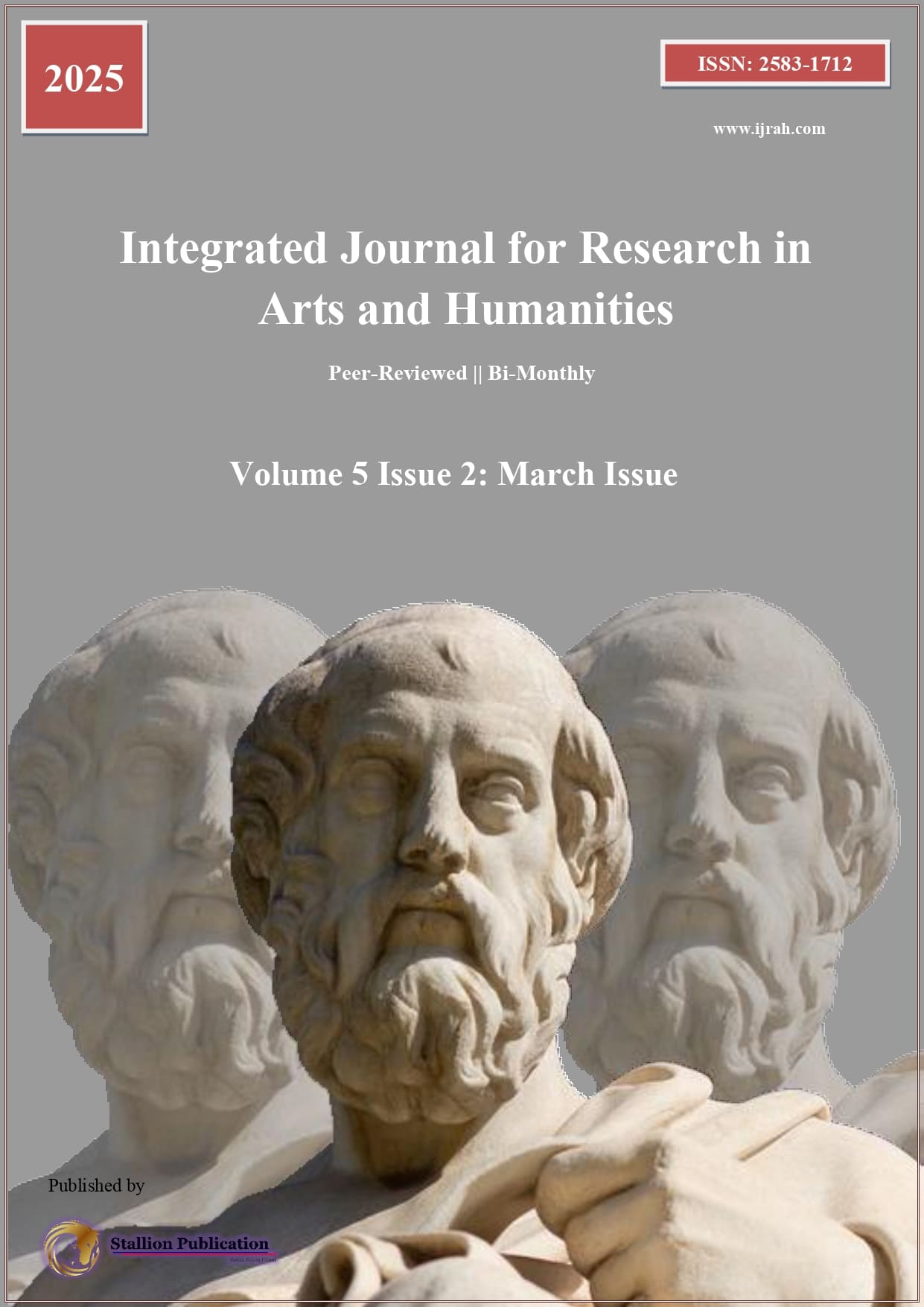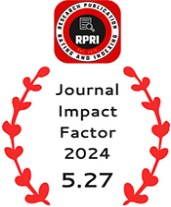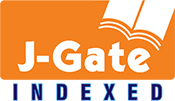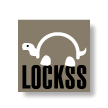Inculcating Physical Literacy Through Indigenous Games: A Key to Sporting Achievement
DOI:
https://doi.org/10.55544/ijrah.5.2.34Keywords:
Indigenous Games, NEP-2020, Physical Education, Physical LiteracyAbstract
Integrating Indigenous games into the educational framework represents a vital opportunity to enhance physical literacy among children, thereby improving their potential for success in sports. These traditional games, deeply rooted in cultural heritage and communal values, serve as practical tools for developing essential physical skills such as coordination, agility, and teamwork while fostering cultural identity and social cohesion. By participating in Indigenous games, children refine their motor skills and cultivate a sense of belonging and pride in their heritage. This research examines the multifaceted benefits of Indigenous games in physical education, emphasizing their contributions to individual skill development and community engagement. This paper advocates for including Indigenous games in modern physical education curricula through a comprehensive analysis, highlighting their potential to provide a holistic approach to physical literacy. Furthermore, it explores the barriers to their integration and suggests best practices for incorporating these culturally significant activities in mainstream sports education. Ultimately, the study underscores the importance of Indigenous games in fostering lifelong physical activity, resilience, and cultural appreciation among children.
Downloads
Metrics
References
Bruner, M. W., Hillier, S., Baillie, C. P. T., Lavallee, L. F., Bruner, B. G., Hare, K., Lovelace, R., & Lévesque, L. (2015). Positive Youth Development in Aboriginal Physical Activity and Sport: a Systematic review. Adolescent Research Review, 1(3), 257–269. https://doi.org/10.1007/s40894-015-0021-9.
Bruner, M. W., Lovelace, R., Hillier, S., Baillie, C., Bruner, B. G., Hare, K., Head, C., Paibomsai, A., Peltier, K., & Lévesque, L. (2019). Indigenous Youth Development through Sport and Physical Activity: Sharing Voices, Stories, and Experiences. International Journal of Indigenous Health, 14(2), 222–251. https://doi.org/10.32799/ijih.v14i2.31945.
Coppola, A. M., & McHugh, T. F. (2016). Considering culturally relevant practices and knowledge-sharing when creating an activity-promoting community research agenda. Sport Education and Society, 23(1), 14–27. https://doi.org/10.1080/13573322.2015.1129942.
Walker, S., Kannan, P., Bhawra, J., & Katapally, T. R. (2023). Evaluation of a longitudinal digital citizen science initiative to understand the impact of culture on Indigenous youth mental health: Findings from a quasi-experimental qualitative study. PLoS ONE, 18(12), e0294234. https://doi.org/10.1371/journal.pone.0294234.
Walker, S., Kannan, P., Bhawra, J., Foulds, H., & Katapally, T. R. (2021). The Impact of Culture, Identity and Intergenerational Connections on Indigenous Youth Mental Health: Qualitative Findings from a Longitudinal Digital Health Community Trial. Research Square (Research Square). https://doi.org/10.21203/rs.3.rs-956256/v1.
Dubnewick, M., Hopper, T., Spence, J. C., & McHugh, T. F. (2018). “There’s a cultural pride through our games”: Enhancing the sport experiences of Indigenous youth in Canada through participation in traditional games. Journal of Sport and Social Issues, 42(4), 207–226. https://doi.org/10.1177/0193723518758456.
Riley, K., Chow, A. F., Wahpepah, K., Humbert, M. L., Brussoni, M., Houser, N., & Erlandson, M. C. (2023). Etuaptmumk (Two-Eyed Seeing) in Nature’s Way-Our Way: braiding physical literacy and risky play through Indigenous games, activities, cultural connections, and traditional teachings. AlterNative an International Journal of Indigenous Peoples, 19(2), 426–436. https://doi.org/10.1177/11771801231167881.
Carl, J., Barratt, J., Arbour-Nicitopoulos, K. P., Barnett, L. M., Dudley, D. A., Holler, P., Keegan, R., Kwan, M., Scurati, R., Sum, R. K., Wainwright, N., & Cairney, J. (2023). Development, explanation, and presentation of the Physical Literacy Interventions Reporting Template (PLIRT). International Journal of Behavioral Nutrition and Physical Activity, 20(1). https://doi.org/10.1186/s12966-023-01423-3.
Defining Physical Literacy for Application in Australia: A Modified Delphi method. (2019). In Journal of Teaching in Physical Education (p. 1) [Journal-article]. https://doi.org/10.1123/jtpe.2018-0264.
Edwards, L. C., Bryant, A. S., Keegan, R. J., Morgan, K., & Jones, A. M. (2016). Definitions, Foundations and Associations of Physical Literacy: A Systematic review. Sports Medicine, 47(1), 113–126. https://doi.org/10.1007/s40279-016-0560-7.
Ferguson, L., Epp, G. B., Wuttunee, K., Dunn, M., McHugh, T., & Humbert, M. L. (2018). ‘It’s more than just performing well in your sport. It’s also about being healthy physically, mentally, emotionally, and spiritually’: Indigenous women athletes’ meanings and experiences of flourishing in sport. Qualitative Research in Sport Exercise and Health, 11(1), 1–19. https://doi.org/10.1080/2159676x.2018.1458332.
Friskawati, G. F., Ma’mun, A., & Mahendra, A. (2023). A consideration of physical literacy for sports policy in Indonesia. Asian Journal of Sport History & Culture, 2(3), 335–349. https://doi.org/10.1080/27690148.2023.2265345.
Houser, N., & Kriellaars, D. (2023). “Where was this when I was in Physical Education?” Physical literacy enriched pedagogy in a quality physical education context. Frontiers in Sports and Active Living, 5. https://doi.org/10.3389/fspor.2023.1185680.
Matsekoleng, T. K., Mapotse, T. A., & Gumbo, M. T. (2022). The role of indigenous games in education: a technology and environmental education perspective. Diaspora Indigenous and Minority Education, 18(1), 68–82. https://doi.org/10.1080/15595692.2022.2160436.
Milko, J. P. & Western University. (2020). IMPROVING PHYSICAL LITERACY IN MIDDLE SCHOOL INDIGENOUS AND NON-INDIGENOUS STUDENTS. In The Dissertation in Practice at Western University [Thesis]. https://ir.lib.uwo.ca/oip/154.
Nasirian, K., & Taheri, H. (2019). INDIGENOUS GAMES IN INDIA: THEN & NOW EPRA International Journal of Research & Development (IJRD). EPRA International Journal of Research & Development (IJRD). https://doi.org/10.36713/epra2016.
Nelson, A., Abbott, R., & Macdonald, D. (2010). Indigenous Australians and physical activity: using a social-ecological model to review the literature. Health Education Research, 25(3), 498–509. https://doi.org/10.1093/her/cyq025.
Pereira, J. M. D. C. (2015). physical literacy and reading literacy: the relationship between fine and gross motor skills and reading ability of children in grades three and four, in a new brunswick, on-reserve first nation elementary school (By University of Trás-os-Montes and Alto Douro & University of New Brunswick).
PHOR, R. K. (2021). HISTORICAL ANALYSIS OF PHYSICAL ACTIVITIES AND SPORTS IN ANCIENT INDIA. In PURVA MIMAANSA (Vols. 12–12, Issue September 2021). https://pm.sdcollegeambala.ac.in/wp-content/uploads/2021/10/Vol12-2-22.pdf.
Powers, T. L. & Taliah L. Powers. (2022). The good sport: physical literacy and a moral self. In Brock University, Faculty of Applied Health Sciences, Master of Arts in Applied Health Sciences (Health and Physical Education).
Van Wyk, N., McCallum, N. T., & Katz, L. (2022). Developing an intentionally designed physical activity model of programming for children’s structured recreation in Canada. Journal of Park and Recreation Administration, 40(3), 69–87. https://doi.org/10.18666/jpra-2021-10910.
Warner, M., Robinson, J., Heal, B., Lloyd, J., Mandigo, J., Lennox, B., & Huyer, L. D. (2020). Increasing physical literacy in youth: A two-week Sport for Development program for children aged 6-10. Prospects, 50(1–2), 165–182. https://doi.org/10.1007/s11125-020-09519-5.
The Role of Indigenous Games in Culture. (n.d.) Retrieved February 1, 2025, from www.ictinc.ca/blog/the-role-of-Indigenous-games-in-culture
Improving children's gross motor skills through traditional games skills practiced along the contextual interference continuum. (n.d.) Retrieved February 1, 2025, from www.frontiersin.org 11-4-98-573. (n.d.) Retrieved February 1, 2025, from www.kheljournal.com
Answers to: Does participation in Indigenous games help promote long-term engagement in physical activity? (n.d.) Retrieved February 1, 2025, from www.classace.io 25282. (n.d.) Retrieved February 1, 2025, from www.ijfmr.com/papers/2024/4/25282.pdf.
An_investigation_into_the_promotion_and_resuscitation_of_traditional_Indian_games_from_a_cultural_standpoint_ijariie24794.pdf?srsltid=AfmBOop3w24UJOx9JVkwCp4ec-6O8Crl5pi7H73A4da3wEzDjKyL1WDP. (n.d.) Retrieved February 1, 2025, from ijariie.com. Research Article - (2024) Volume 19, Issue 2. (n.d.) Retrieved February 1, 2025, from www.riped-online.com.
Saikia, P. (2024). Early Childhood Care and Education in NEP 2020. International Journal for Multidisciplinary Research, 6(3). https://doi.org/10.36948/ijfmr.2024.v06i03.23594.
Dangel, U. (2016). Health and Well-Being. In De Gruyter eBooks (pp. 146–152). https://doi.org/10.1515/9783035608632-023.
Downloads
Published
How to Cite
Issue
Section
License
Copyright (c) 2025 Sonu Kumar, Mukul Pant, Thomas K. M., Hiralal Yadav

This work is licensed under a Creative Commons Attribution-NonCommercial-NoDerivatives 4.0 International License.

























